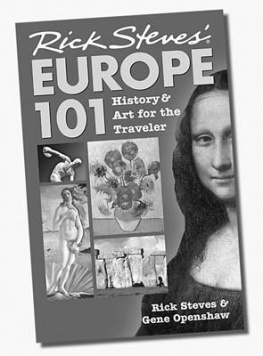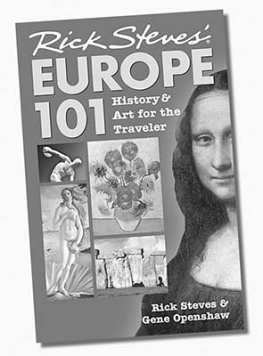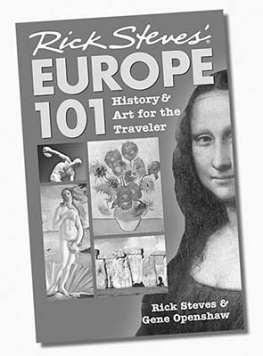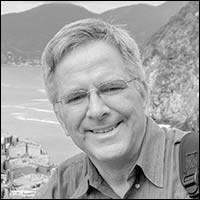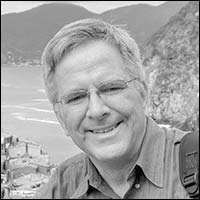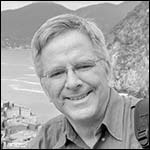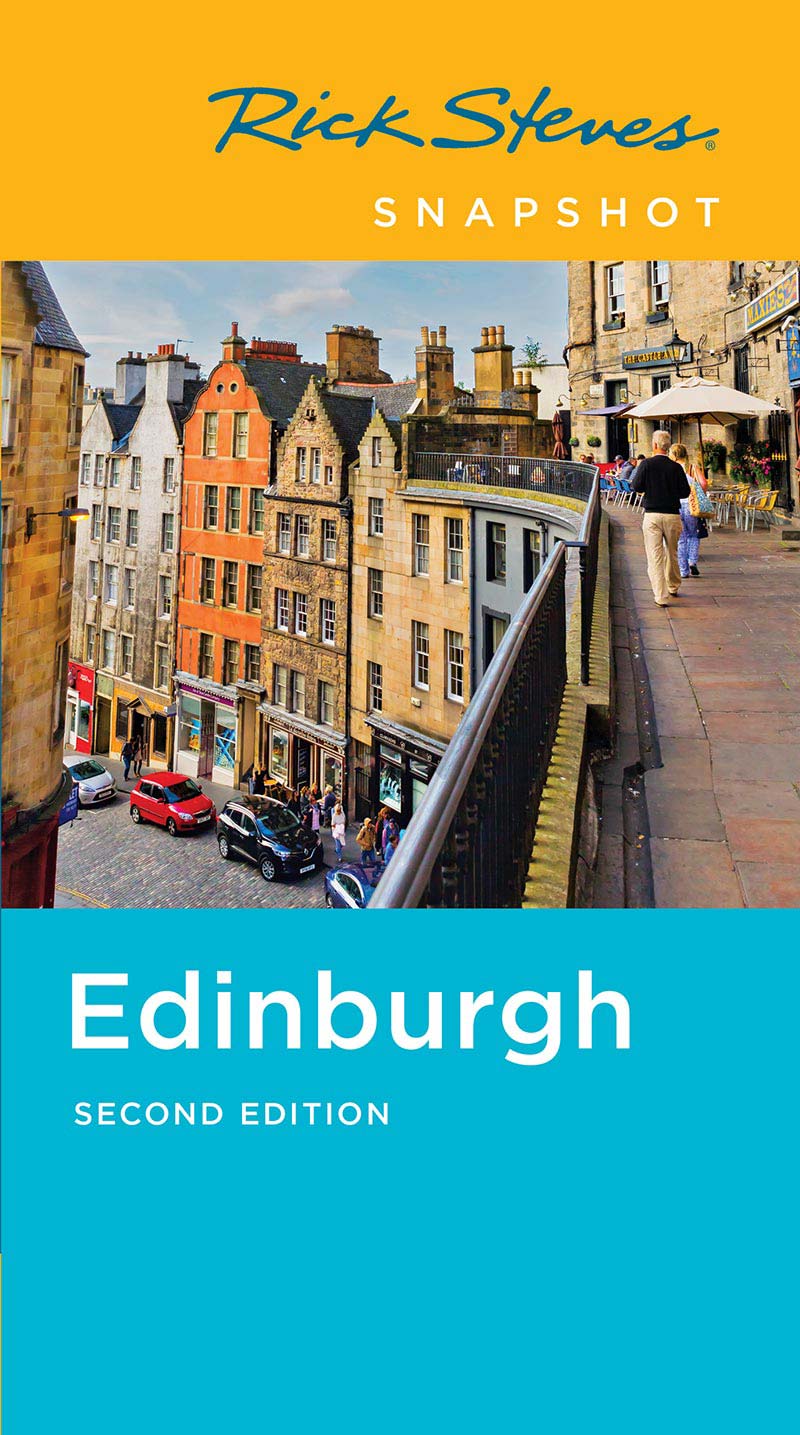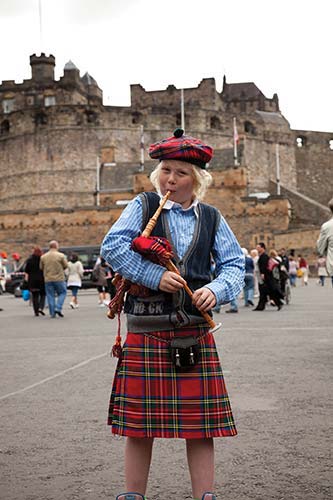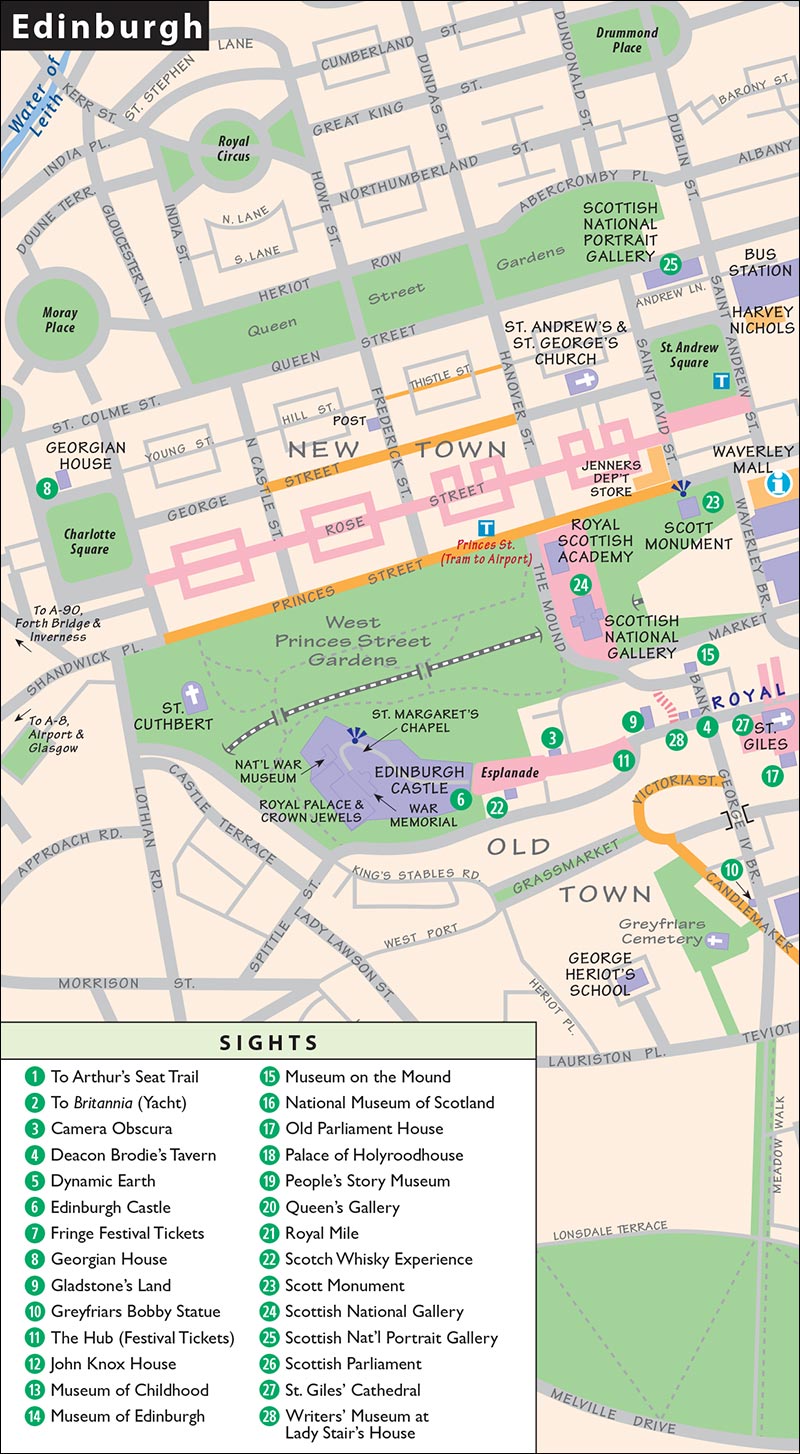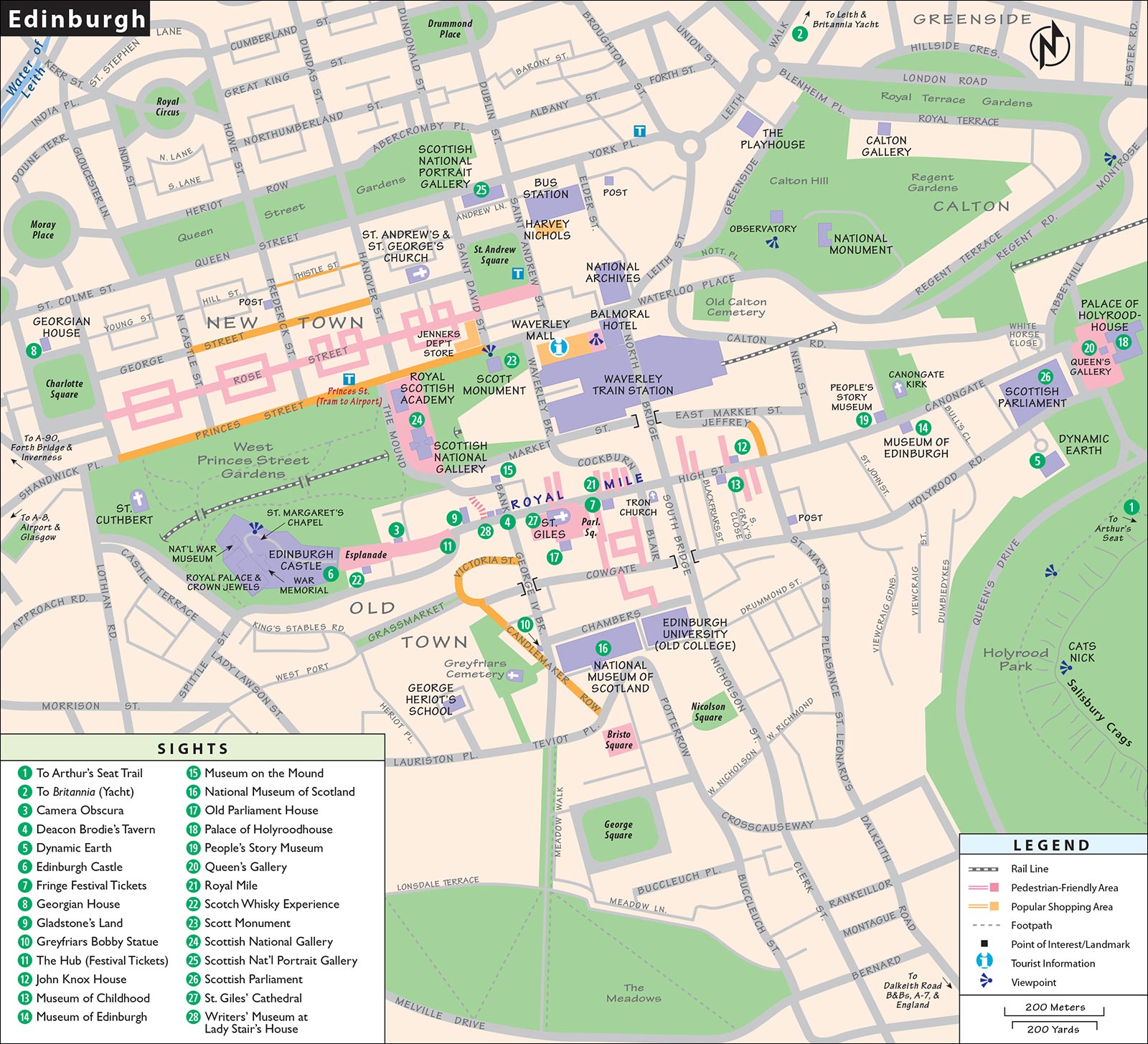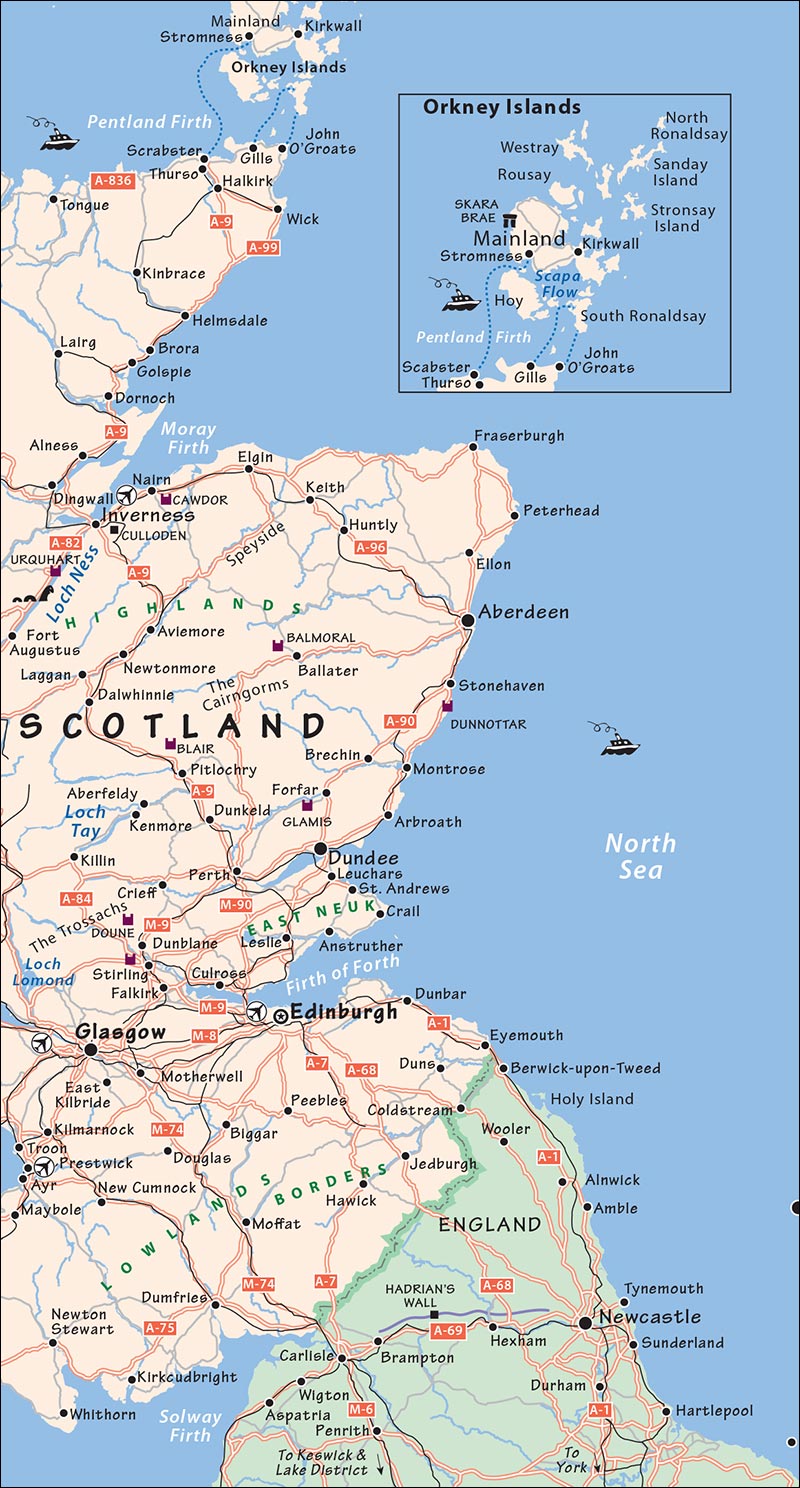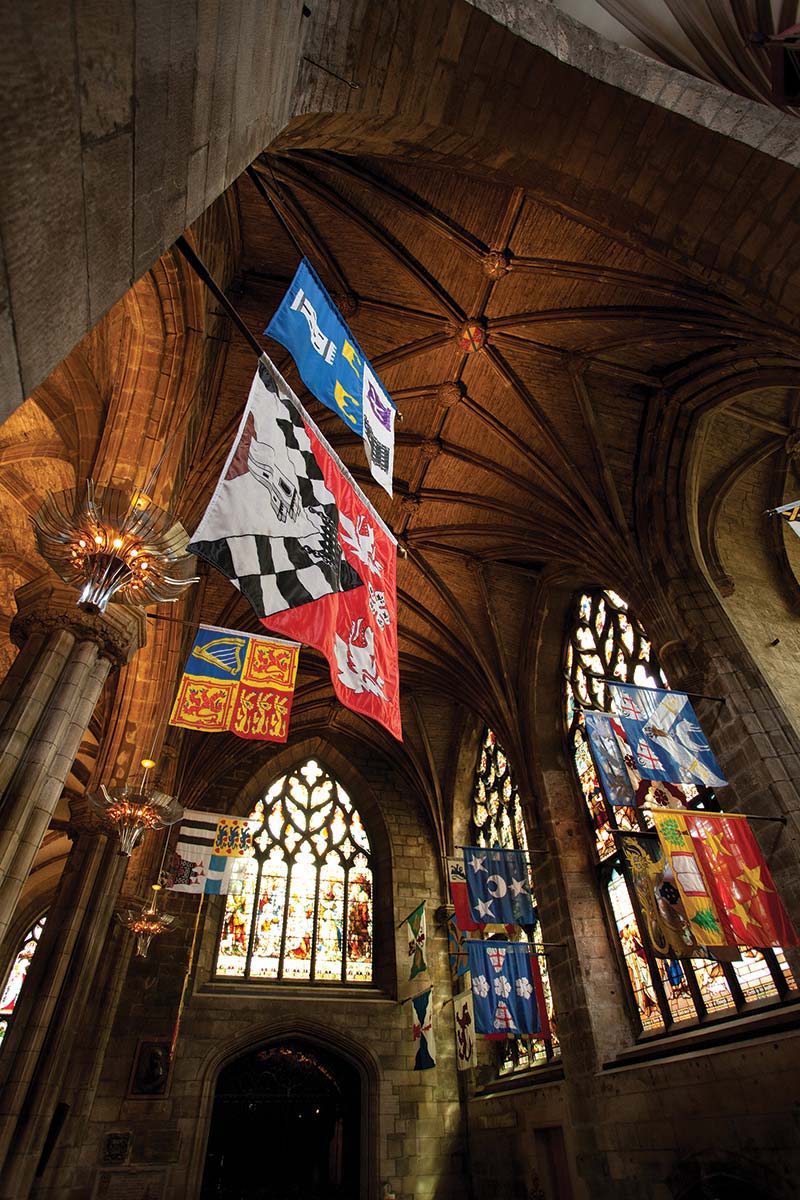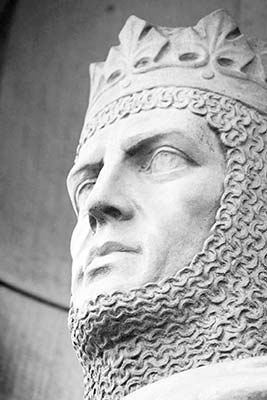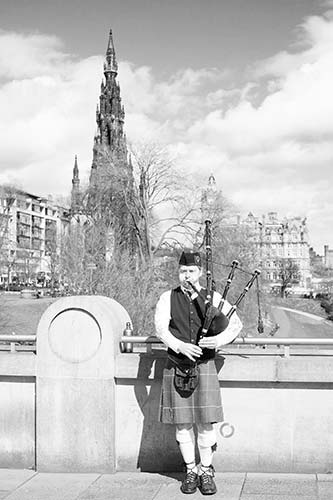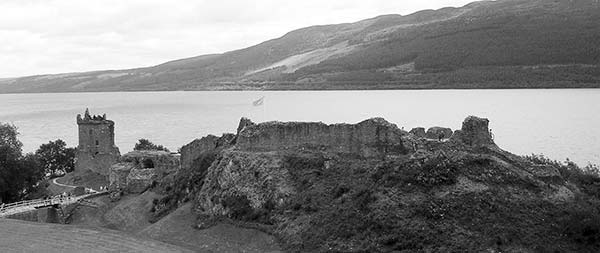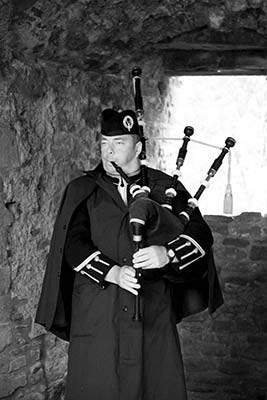Contents
Contents
Rick Steves
SNAPSHOT
Edinburgh
This Snapshot guide, excerpted from my guidebook Rick Steves Scotland, introduces you to the rugged, feisty, colorful capital city of Edinburgh. A hubbub of innovation and tradition, this urbane city rambles along seven hills on the banks of the Firth of Forth. Its historic Royal Mile links Edinburgh Castlehome of Mary Queen of Scotsto the Palace of Holyroodhouse, the home away from home of todays Queen Elizabeth. To the north is the citys New Town, a characteristic 18th-century neighborhood of Georgian mansions and upscale hangouts.
Edinburgh is the political, cultural, and intellectual center of Scotland, but intrepid visitors can still find a few surviving rough edges of Auld Reekie, as it was once called (for the smell of smoke during the Victorian era). Take a walk along historic cobbled streets and narrow lanes, tracing the footsteps of Robert Burns and Robert Louis Stevenson. Sip whisky with an expert and see firsthand how Scotlands national drink can become, as theyre fond of saying, a very good friend. Debate the pros and cons of Scottish independence on the steps of the 21st-century parliament building. Through it all, be prepared for a Scottish charm offensive that will make you want to stay longer in one of Europes most intoxicating capitals.
To help you have the best trip possible, Ive included the following topics in this book:
Planning Your Time, with advice on how to make the most of your limited time
Orientation, including tourist information (abbreviated as TI), tips on public transportation, local tour options, and helpful hints
Sights with ratings:
Dont miss
Try hard to see
Worthwhile if you can make it
No ratingWorth knowing about
Sleeping and Eating, with good-value recommendations in every price range
Connections, with tips on trains, buses, and driving
Practicalities, near the end of this book, has information on money, staying connected, hotel reservations, transportation, and other helpful hints.
To travel smartly, read this little book in its entirety before you go. Its my hope that this guide will make your trip more meaningful and rewarding. Traveling like a temporary local, youll get the absolute most out of every mile, minute, and dollar.
Happy travels!
One of the three countries that make up Great Britain, rugged, feisty, colorful Scotland stands apart. Whether its the laid-back, less-organized nature of the people, the stony architecture, the unmanicured landscape, or simply the haggis, go-its-own-way Scotland is distinctive.
Scotland encompasses about a third of Britains geographical area (30,400 square miles), but has less than a tenth of its population (about 5.4 million). This sparsely populated chunk of land stretches to Norwegian latitudes. Its Shetland Islands, at about 60N (similar to Anchorage, Alaska), are the northernmost point of the British Isles. You may see Scotland referred to as Caledonia (its ancient Roman name) or Alba (its Gaelic name). Scotlands fortunes were long tied to the sea; all of its leading cities are located along firths (estuaries), where major rivers connect to ocean waters.
The southern part of Scotland, called the Lowlands, is relatively flat and urbanized. The northern areathe Highlandsfeatures a wild, severely undulating terrain, punctuated by lochs (lakes) and fringed by sea lochs (inlets) and islands.
The Highland Boundary Fault that divides Scotland geologically also divides it culturally. Historically, there were two distinct identities: rougher Highlanders in the northern wilderness and the more refined Lowlanders in the southern flatlands and cities. Highlanders represented the stereotypical image of true Scots, speaking Gaelic, wearing kilts, and playing bagpipes, while Lowlanders spoke languages of Saxon origin and wore trousers. After the Scottish Reformation, the Lowlanders embraced Protestantism, while most Highlanders stuck to Catholicism. Although this Lowlands/Highlands division has faded over time, some Scots still cling to it.
Scotland Almanac
Official Name: Scotland.
Population: About 5.4 million. Scotland is mostly English-speaking, though about 1.5 million people use the Scots language, and about 60,000 speak Scottish Gaelic.
Latitude and Longitude: 57N and 4W. The Shetland Islands are Scotlands northernmost point, at 60N (similar to Anchorage, Alaska).
Area: 30,400 square miles, about the size of South Carolina.
Geography: Scotlands flatter southern portion is the Lowlands; the Highlands to the north are more wild and hilly, and the country boasts over 6,000 miles of coastline and more than 790 islands (only about 130 are inhabited). Ben Nevis in western Scotland (at 4,406 feet) is Great Britains highest peak.




